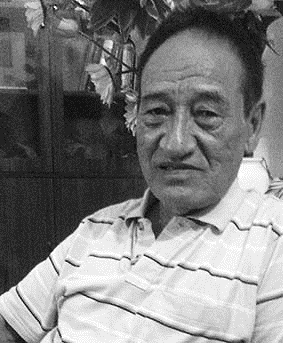
With sadness in our hearts, we inform you that the eminent senior physician, scholar, and lineage holder of Sowa Rigpa, Dr. Tashi Yangphel Tashigang, recently passed away in Delhi. In this brief blogpost, Dr. Pasang Yonten Arya and Bedurya Publications remember him as a dear friend and highlight some of his many achievements and contributions to Tibetan medicine and beyond.
Tashi Yangphel Tashigang was born into an amchi family lineage in Nimo, a rural village not too far from Leh, Ladakh. As a young man, he was initially trained by his grandfather, Sonam Norbu Lharje. In 1956, at the age of eighteen, however, he got the precious opportunity to further his studies at the Mentsikhang in Lhasa. There, he received teachings from its renowned founder, Lamen Khyenrap Norbu (1883-1962), the personal physician of the Thirteenth Dalai Lama. Tashi Yangphel was in fact the first Ladakhi to be admitted at Mentsikhang’s medical college (Blaikie 2014, p. 107-108), and was likely the last remaining direct student of Khyenrap Norbu after the death of Dr. Lobsang Tashi about two years ago. During the Tibetan uprising of 1959 in the wake of the Chinese communist invasion, they were two of the very few doctors who managed to escape to India.
In 1960, Dr. Tashigang was appointed as one of the first resident doctors at the newly established Tibetan medical institute under the difficult circumstances of exile in Dharamsala (Kloos 2008). He then moved to the eastern suburbs of New Delhi a few years later, gradually emerging as a successful early pioneer of the private clinic-cum-pharmacy model by setting up Tashigang Herbal Centre in 1986. In the meanwhile, he had joined the Delhi field office of the American Library of Congress in 1968 as a Tibetan language specialist after a chance meeting with Gene Smith (1936-2010). Over nearly two decades of textual acquisition and cataloguing under Smith’s supervision, Tashi Yangphel emerged as “the leading expert on Tibetan medical literature in exile” (Gerke 2021, p. 15). Having traveled widely across India, Bhutan, Nepal, Tibet, and beyond to retrieve rare woodblock prints and manuscripts, he equally received advanced teachings and training on mercury processing from Amchi Karma Chöpel and Amchi Kunsang Kunphen (Gerke 2021, p. 120-122). He thus also became an expert pharmacist, producing, researching (Aschoff et al. 1997; Aschoff and Tashigang 2004), and exporting highly complex precious pills alongside a large number of other formulas.
Leaving aside his long career in various positions of the Indian administration and his contribution to the recognition of Sowa Rigpa as a traditional medical system in exile, Dr. Tashigang’s most significant legacy is undoubtably his independent publication of the Smanrtsis Shesrig Spendzod series, consisting of a wide range of medical and astrological texts numbering more than 250 volumes in total (!): 82 titles can be accessed through BDRC, and 67 are listed in the Library of Congress catalogue. The preservation of this invaluable treasury of knowledge will continue to inspire generations of practitioners and scholars across the Himalayas and beyond. The series was generously distributed to specialized libraries and research institutes worldwide, including in the Tibetan Autonomous Region (TAR), for which Tashigang received the Yuthok Award at the International Academic Conference on Tibetan Medicine that was held in Lhasa in 2000.
Dr. Pasang Yonten Arya started studying Dr. Tashi Yangphel Tashigang’s published collections in the late 70s, until one day Tashi Yangphel came to visit him at his home near Dharamsala Men-Tsee-Khang’s college. He presented Yutokpa’s biography, the Yutok Nyingtik cycle, and works on mercury purification. The two scholar-physicians discussed many more topics over the years, naturally becoming good friends as they shared insights. Pasang Yonten was inspired by Dr. Tashigang’s fresh way of engaging in textual research and his wide-ranging knowledge on Ayurveda and Siddha medicine, whereas Tashigang was much impressed by Dr. Pasang’s book on the history of Tibetan medicine. After many years of separation, they met again in the summer of 2013, taking ample time to delve into literature related to the Medicine Buddha. Their final meeting took place in 2017 at Dr. Tashigang’s home. After having lunch together, they went through his impressive library once again, Tashigang donating a number of rare works to his old friend. He also showed photographs of Medicine Buddha statues in Nepal, explaining that he had overseen the construction of a temple dedicated to Sangyé Menla near the ancient city of Vaishali (present-day Bihar, where Buddha Shakyamuni is said to have expounded the Medicine Buddha sutra). He and his wife invited their visitors to stay at the temple…
We pray that the huge collections of merit and wisdom accumulated by Dr. Tashi Yangphel Tashigang may continue to benefit the science of healing and all sentient beings!
For some more details on Dr. Tashigang’s life, have a look at this TME article.
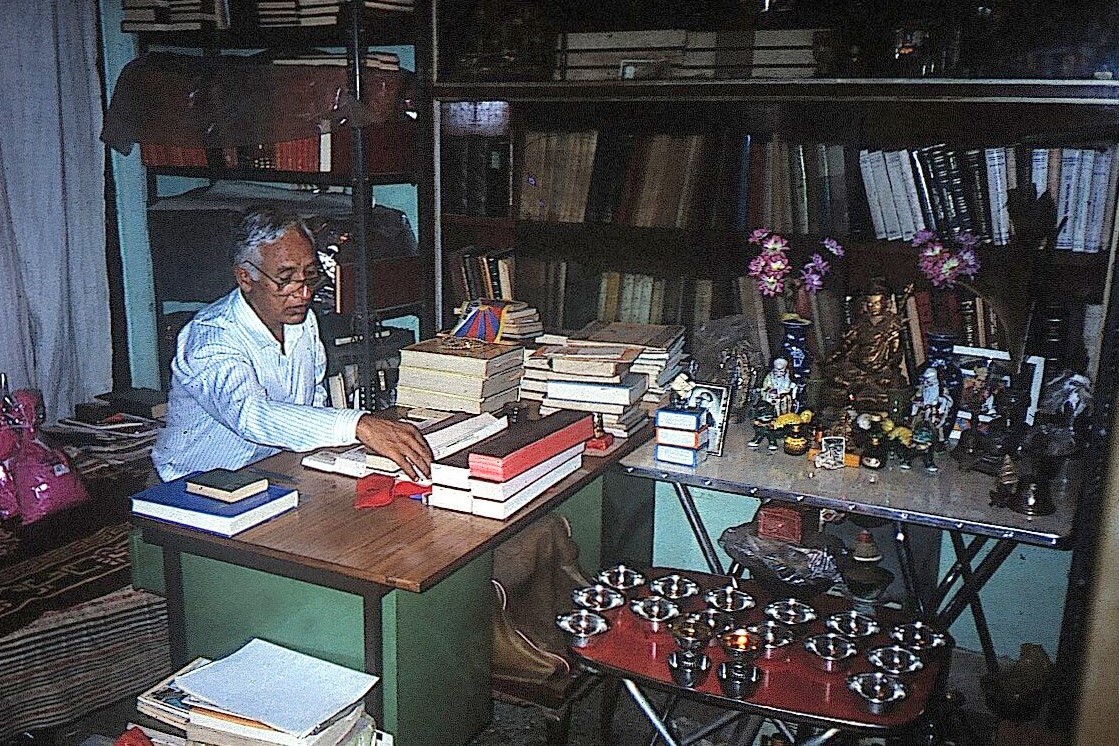
Dr. Tashigang in his personal library
(courtesy Jürgen C. Aschoff)
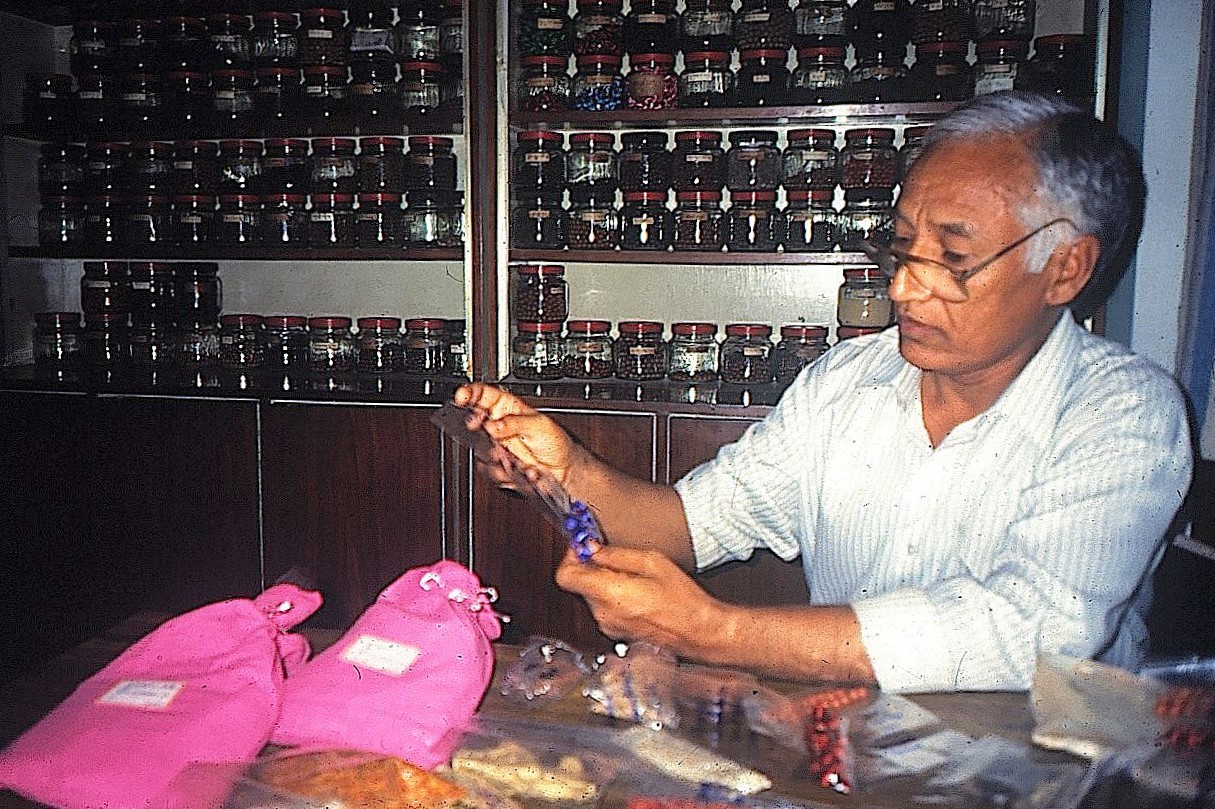
Looking at precious pills in front of his dispensary
(courtesy Jürgen C. Aschoff)
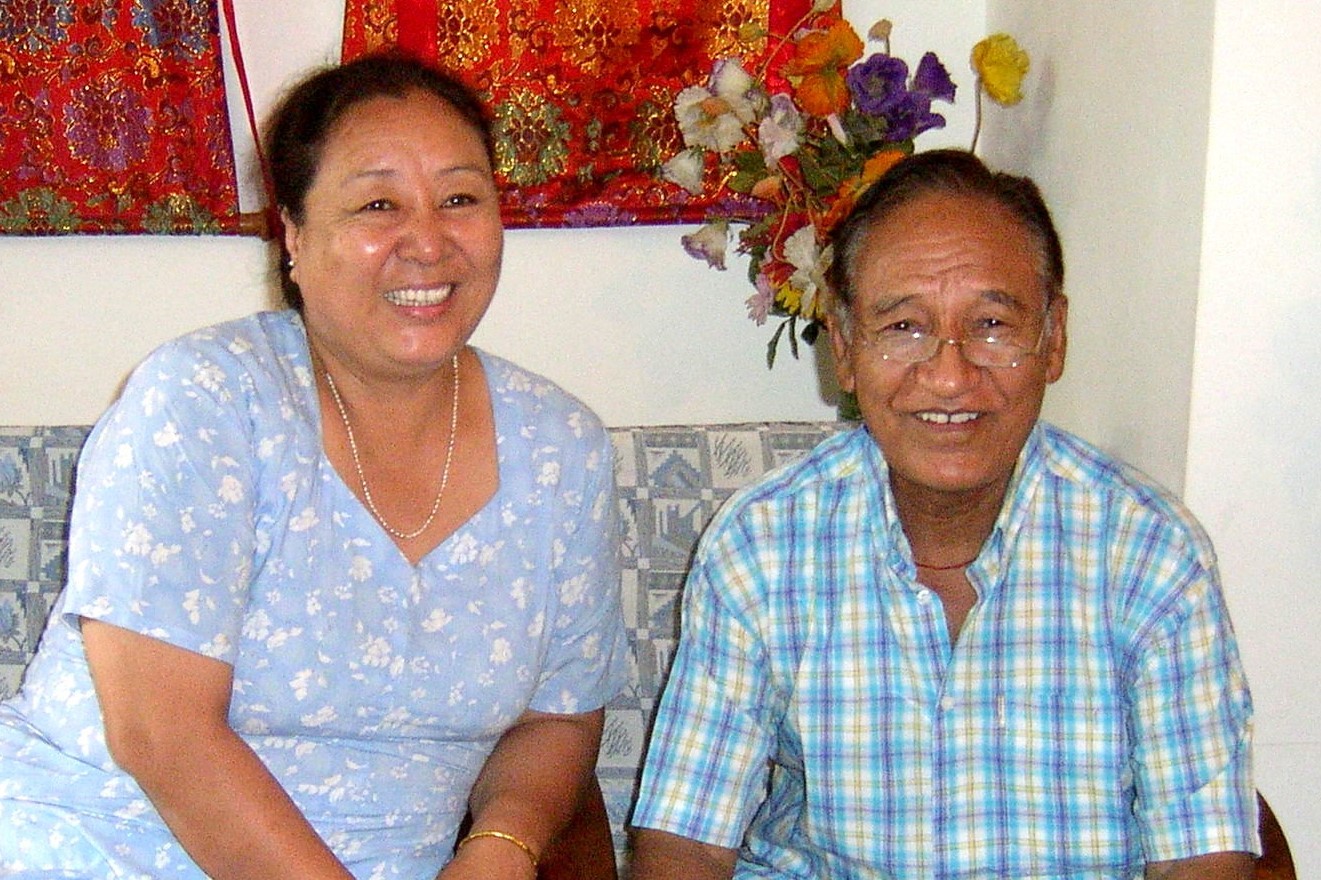
Tashi Yangphel and his wife
(courtesy Jürgen C. Aschoff)
References
Aschoff, Jürgen C., T. Y. Tashigang, and Jacob Maier. 1997. “Clinical Trial in Migraine Prophylaxis with a Multicomponent Tibetan Jewel-Pill: Transfer Problems of Tibetan into Western Medicine, Demonstrated ‘Pars pro Toto’ on the Aconite Plants in Our Tibetan Prescription.” In Tibetan Medicine: “East Meets West, West Meets East”. Proceedings of the International Symposium (University of Ulm, Germany, 19-20 July 1996), edited by Jürgen C. Aschoff and Ina Rösing, 21–38. Ulm: Fabri Verlag.
Aschoff, Jürgen C., and Tashi Y. Tashigang. 2004. Tibetan Jewel Pills: The Rinchen Medicine. Ulm/Donau: Fabri Verlag.
Blaikie, Calum. 2014. “Making Medicine: Pharmacy, Exchange and the Production of Sowa Rigpa in Ladakh.” PhD dissertation. Canterbury: University of Kent.
Gerke, Barbara. 2021. Taming the Poisonous: Mercury, Toxicity, and Safety in Tibetan Medical Practice. Heidelberg: Heidelberg University Publishing.
Kloos, Stephan. 2008. “The History and Development of Tibetan Medicine in Exile.” Tibet Journal 33 (3): 15–49.


